At the
southern end of Red Square stands the icon of Russia: St Basil’s Cathedral.
This crazy confusion of colours, patterns and shapes is the culmination of a
style that is unique to Russian architecture. In 1552 Ivan the Terrible
captured the Tatar stronghold of Kazan on the Feast of Intercession. He
commissioned this landmark church, officially the Intercession Cathedral, to
commemorate the victory. Created from 1555 to 1561, this masterpiece would
become the ultimate symbol of Russia.
The
cathedral’s apparent anarchy of shapes hides a comprehensible plan of nine main
chapels. The tall, tent-roofed tower in the centre houses the namesake Church
of the Intercession of the Mother of God. The four biggest domes top four
octagonal-towered chapels: the Church of Sts Cyprian & Justina, Church of
the Holy Trinity, Church of the Icon of St Nicholas the Miracle Worker, and the
Church of the Entry of the Lord into Jerusalem. Finally, there are four smaller
chapels in between. Each chapel was consecrated in honour of an event or battle
in the struggle against Kazan.
Legend has
it that Ivan had the architects blinded so that they could never build anything
comparable. This is a myth, however, as records show that they were employed a
quarter of a century later (and four years after Ivan’s death) to add an
additional chapel to the structure.
The Church
of St Vasily the Blessed, the northeastern chapel on the 1st floor, contains
the canopy-covered crypt of its namesake saint, one of the most revered in
Moscow. Vasily (Basil) the Blessed was known as a 'holy fool', sometimes going
naked and purposefully humiliating himself for the greater glory of God. He was
believed to be a seer and miracle maker, and even Ivan the Terrible revered and
feared him. This 10th chapel – the only one at ground level – was added in
1588, after the saint's death. Look for the icon depicting St Vasily himself,
with Red Square and the Kremlin in the background.
Novodevichy Convent
The
Novodevichy Convent was founded in 1524 to celebrate the taking of Smolensk from
Lithuania, an important step in Moscow’s conquest of the old Kyivan Rus lands.
The oldest and most dominant building on the grounds is the white Smolensk
Cathedral, with a sumptuous interior covered in 16th-century frescoes.
Novodevichy is a functioning monastery. Women are advised to cover their heads
and shoulders when entering the churches, while men should wear long pants.
From early
on, the ‘New Maidens’ Convent’ was a place for women from noble families to
retire – some more willingly than others. The convent’s most famous residents
included Irina Godunova (wife of Fyodor I and sister of Boris Godunov), Sofia
Alekseyevna (half-sister of Peter the Great), and Eudoxia Lopukhina (first wife
of Peter the Great).
Enter the
convent through the red-and-white Moscow-baroque Transfiguration Gate-Church (Преображенская
надвратная
церковь
), built
in the north wall between 1687 and 1689. All of these striking walls and
towers, along with many other buildings on the grounds, were rebuilt around
this time, under the direction of Sofia Alekseyevna. The elaborate bell tower (Колокольня
) against the east wall soars 72m
over the rest of the monastery. When it was built in 1690 it was one of the
tallest towers in Moscow (second only to the Ivan the Great Bell Tower in the
Kremlin).
The
centrepiece of the monastery is the white Smolensk Cathedral (Смоленский
собор
), built from 1524 to 1525 to house the precious Our Lady of Smolensk
icon. Previously surrounded by four smaller chapels, the floor plan was
modelled after the Assumption Cathedral in the Kremlin. The sumptuous interior
is covered in 16th-century frescoes, which are considered to be among the
finest in the city. The huge gilded iconostasis – donated by Sofia in 1685 –
includes icons that date from the time of Boris Godunov. The icons on the fifth
tier are attributed to 17th-century artists Simeon Ushakov and Fyodor Zubov.
The tombs of Sofia, a couple of her sisters, and Eudoxia Lopukhina are in the
south nave.
Sofia
Alekseyevna used the convent as a residence when she ruled Russia as regent in
the 1680s. During her rule, she rebuilt the convent to her liking – which was
fortunate, as she was later confined here when Peter the Great came of age.
After being implicated in the Streltsy rebellion, she was imprisoned here for
life, primarily inhabiting the Pond Tower (Напрудная башня). Sofia was later joined in her enforced retirement by Eudoxia
Lopukhina who stayed in the Chambers of Eudoxia Lopukhina (Лопухинские Палаты).
Cathedral of Christ the Saviour
This
opulent and grandiose cathedral was completed in 1997 – just in time to
celebrate Moscow's 850th birthday. The cathedral’s sheer size and splendour
guarantee its role as a love-it-or-hate-it landmark. Considering Stalin's plan
for this site (a Palace of Soviets topped with a 100m statue of Lenin), Muscovites
should at least be grateful they can admire the shiny domes of a church instead
of the shiny dome of Ilyich’s head.
The
Cathedral of Christ the Saviour sits on the site of an earlier and similar
church of the same name, built in the 19th century to commemorate Russia’s
victory over Napoleon. The original was destroyed in 1931, during Stalin’s orgy
of explosive secularism. His plan to replace the church with a 315m-high Palace
of Soviets never got off the ground – literally. Instead, for 50 years the site
served another important purpose: the world’s largest swimming pool.
The
Cathedral replicates its predecessor in many ways. The central altar is
dedicated to the Nativity, while the two side altars are dedicated to Sts
Nicholas and Alexander Nevsky. Frescoes around the main gallery depict scenes
from the War of 1812, while marble plaques remember the participants.
The
original cathedral was built on a hill (since levelled). The contemporary
cathedral has been constructed on a wide base, which contains the smaller (but
no less stunning) Church of the Transfiguration. This ground-level chapel
contains the venerated icon Christ Not Painted by Hand, by Sorokin, which was
miraculously saved from the original cathedral.
Assumption Cathedral
On the
northern side of Sobornaya pl, with five golden helmet domes and four
semicircular gables, the Assumption Cathedral is the focal church of
pre-revolutionary Russia and the burial place of most of the heads of the
Russian Orthodox Church from the 1320s to 1700. A striking 1660s fresco of the
Virgin Mary faces Sobornaya pl, above the door once used for royal processions.
If you have limited time, come straight here. The visitors' entrance is at the
western end.
The
interior of the Assumption Cathedral is unusually bright and spacious, full of
warm reds, blues and gold. The west wall features a scene of the Apocalypse, a
favourite theme of the Russian Church in the Middle Ages. The pillars have
pictures of martyrs on them, as martyrs are considered to be the pillars of
faith. Above the southern gates are frescoes of Yelena and Constantine, who
brought Christianity to Greece and the south of Russia. The space above the
northern gate is taken by Olga and Vladimir, who brought Christianity to the
north.
Most of the
existing murals on the cathedral walls were painted on a gilt base in the
1640s, with the exception of three grouped together on the south wall: The
Apocalypse (Апокалипсис
),
The Life of Metropolitan Pyotr (Житие
Митрополита
Петра
) and All Creatures Rejoice in Thee
(О
Тебе
радуется
). These are attributed to Dionysius and his
followers, the cathedral's original 15th-century mural painters.
The tombs
of many of the leaders of the Russian Church (metropolitans up to 1590,
patriarchs from 1590 to 1700) are against the north, west and south walls. Near
the west wall is a shrine with holy relics of Patriarch Hermogen, who was
starved to death during the Time of Troubles in 1612.
Near the
south wall, the tent-roofed wooden throne is known as the Throne of Monomakh.
It was made in 1551 for Ivan the Terrible. Its carved scenes highlight the
career of 12th-century Grand Prince Vladimir Monomakh of Kiev – considered to
be Ivan's direct predecessor.
The
iconostasis dates from 1652, but its lowest level contains some older icons.
The 1340s Saviour with the Angry Eye (Спас
ярое
око
) is second from the right. On the
left of the central door is the Virgin of Vladimir (Владимирская
Богоматерь
), an early 15th-century Rublyov-school copy of
Russia's most revered image, the Vladimir Icon of the Mother of God (Владимирская
Икона
Богоматери
).
The 12th-century original, now in Moscow's Tretyakov Gallery, stood in the
Assumption Cathedral from the 1480s to 1930. One of the oldest Russian icons,
the 12th-century red-clothed St George (Святой
Георгий
) from
Novgorod, is positioned by the north wall.
The
original icons of the lower, local tier are symbols of victory brought from
Vladimir, Smolensk, Veliky Ustyug and other places. The south door was brought
from the Nativity of the Virgin Cathedral in Suzdal.
Overlooking
the river, the Ascension Church, sometimes called the ‘white column’, is
Kolomenskoe Museum-Reserve's loveliest structure. Built between 1530 and 1532
for Grand Prince Vasily III, it probably celebrated the birth of his heir, Ivan
the Terrible. It was a revolutionary structure at the time, which experts
attribute to Italian masters.
As the
first brick church with a tent-shaped roof (previously found only on wooden
churches), it represents an important development in Russian architecture. This
break with the Byzantine tradition would pave the way for Moscow's great St
Basil’s Cathedral, which was built 25 years later. There is an exhibit on
milestones in Kolomenskoe history in the tent-roofed gatehouse near the church.
With its
two golden domes rising above the eastern side of Sobornaya pl, the Ivan the
Great Bell Tower is the Kremlin's tallest structure – a landmark visible from
30km away. Before the 20th century it was forbidden to build any higher in
Moscow. Purchase a ticket to the architectural exhibit inside for a
specifically timed admission to climb the 137 steps to the top for sweeping
views.
Ivan the
Great houses a multimedia presentation of the architectural history of the
Kremlin complex. Using architectural fragments and electronic projections, the
exhibit illustrates how the Kremlin has changed since the 12th century. Special
attention is given to individual churches within the complex, including several
churches that no longer exist. The 45-minute audio tour ends with a 137-step
climb to the top of the tall tower, yielding an amazing (and unique!) view of
Sobornaya pl, with the Church of Christ the Saviour and the Moskva-City
skyscrapers in the distance.
The bell
tower is only open when weather allows. Purchase your ticket (for a specific
admission time) at the ticket office in Alexander Garden before you enter the
Kremlin grounds. The number of people admitted for each time slot is extremely
limited, so it may require some flexibility.
The bell
tower's history dates back to the Church of Ioann Lestvichnik Under the Bells,
built on this site in 1329 by Ivan I. In 1505, the Italian Marco Bono designed
a new belfry, originally with only two octagonal tiers beneath a drum and a
dome. In 1600, Boris Godunov raised it to 81m. Local legend claims this was a
public works project designed to employ the thousands of people who had come to
Moscow during a famine, but historical documents contradict the story.
The
building's central section, with a gilded single dome and a 65-tonne bell,
dates from between 1532 and 1542. The tent-roofed annexe, next to the belfry,
was commissioned by Patriarch Filaret in 1642 and bears his name.
Archangel Cathedral
The
Archangel Cathedral at the southeastern corner of Sobornaya pl was for
centuries the coronation, wedding and burial church of tsars. It was built by
Ivan Kalita in 1333 to commemorate the end of the great famine, and dedicated
to Archangel Michael, guardian of the Moscow princes. It contains the tombs of
almost all of Muscovy's rulers from the 14th to the 17th century.
By the
early 16th century the Archangel Cathedral fell into disrepair and was rebuilt
between 1505 and 1508 by the Italian architect Alevisio Novi. Like the nearby
Assumption Cathedral, it has five domes and is essentially Byzantine-Russian in
style. However, the exterior has many Venetian Renaissance features, notably
the distinctive scallop-shell gables and porticoes.
The tombs
of all Muscovy's rulers from the 1320s to the 1690s are here. The only absentee
is Boris Godunov, whose body was taken out of the grave on the order of a False
Dmitry and buried at Sergiev Posad in 1606. The bodies are buried underground,
beneath the 17th-century sarcophagi and 19th-century copper covers. Tsarevich
Dmitry, a son of Ivan the Terrible who died mysteriously in 1591, lies beneath
a painted stone canopy.
It was
Dmitry's death that sparked the appearance of a string of impersonators, known
as False Dmitrys, during the Time of Troubles. Ivan's own tomb is out of sight
behind the iconostasis, along with those of his other sons: Ivan (whom he
killed) and Fyodor (who succeeded him). From Peter the Great onwards, emperors
and empresses were buried in St Petersburg; the exception was Peter II, who
died in Moscow in 1730 and is here.
The
17th-century murals were uncovered during restorations in the 1950s. The south
wall depicts many of those buried here; on the pillars are some of their
predecessors, including Andrei Bogolyubsky, Prince Daniil and his father,
Alexander Nevsky.
Annunciation Cathedral
The
Annunciation Cathedral, at the southwest corner of Sobornaya pl, contains
impressive murals in the gallery and an archaeology exhibit in the basement.
The central chapel contains the celebrated icons of master painters Theophanes
the Greek and Andrei Rublyov.
Many of the
murals in the gallery date from the 1560s. Among them are the Capture of
Jericho in the porch, Jonah and the Whale in the northern arm of the gallery,
and the Tree of Jesus on its ceiling. Other murals feature ancient philosophers
Aristotle, Plutarch, Plato, Socrates and others holding scrolls with their own
wise words.
The small
central part of the cathedral has a lovely jasper floor. The 16th-century
frescoes include Russian princes on the north pillar and Byzantine emperors on
the south, both with Apocalypse scenes above them.
But the
chapel's real treasure is the iconostasis, where restorers in the 1920s
uncovered early 15th-century icons by three of the greatest medieval Russian
artists. Theophanes likely painted the six icons at the right-hand end of the
deesis row, the biggest of the six tiers of the iconostasis. Andrei Rublyov is
reckoned to be the artist of most of the paintings at the left end of the
festival row – above the deesis row – while the seven at the right-hand end are
attributed to Prokhor of Gorodets.
The
basement – which remains from the previous 14th-century cathedral on this site
– contains a fascinating exhibit on the archaeology of the Kremlin. The
artefacts date from the 12th to 14th centuries, showing the growth of Moscow
during this period.
Donskoy monastery
Moscow's
youngest monastery, Donskoy was founded in 1591 as the home of the Virgin of
the Don icon, now in the Tretyakov Gallery. This icon is credited with the
victory in the 1380 battle of Kulikovo; it’s also said that, in 1591, the Tatar
Khan Giri retreated without a fight after the icon showered him with burning
arrows in a dream.
Most of the
monastery, surrounded by a brick wall with 12 towers, was built between 1684
and 1733 under Regent Sofia and Peter the Great. The Virgin of Tikhvin Church
over the north gate, built in 1713 and 1714, is one of the last examples of
Moscow baroque. In the centre of the grounds is the large brick New Cathedral,
built between 1684 and 1693. Just to its south is the smaller Old Cathedral,
dating from 1591 to 1593.
When
burials in central Moscow were banned after the 1771 plague, the Donskoy
Monastery became a graveyard for the nobility, and it is littered with
elaborate tombs and chapels.
Donskoy
Monastery is a five-minute walk from Shabolovskaya metro. Go south along ul
Shabolovka, then take the first street west, 1-y Donskoy proezd.
Church of
the Trinity in Nikitniki
Hidden
between big government blocks, this little gem of a church is an exquisite
example of Russian baroque. Built in the 1630s, its onion domes and tiers of
red-and-white spade gables rise from a square tower. Its interior is covered
with 1650s gospel frescoes by Simon Ushakov and others. A carved doorway leads
into St Nikita the Martyr’s Chapel, above the vault of the Nikitnikov merchant
family, who were among the patrons who financed the church's construction.
Church of
the Nativity of the Virgin in Putinki
When this
church was completed in 1652, Patriarch Nikon responded by banning tent roofs
like those featured here. Apparently, he considered such architecture too
Russian, too secular and too far removed from the Church’s Byzantine roots.
Fortunately, the Church of the Nativity has survived to grace this corner near
Pushkinskaya pl.
Novospassky
Monastery
 Novospassky
Monastery, a 15th-century fort-monastery, is about 1km south of Taganskaya pl.
The centrepiece of the monastery, the Transfiguration Cathedral, was built by
the imperial Romanov family in the 1640s in imitation of the Kremlin’s
Assumption Cathedral. Frescoes depict the history of Christianity in Russia,
while the Romanov family tree, which goes as far back as the Viking Prince
Rurik, climbs one wall. The other church is the 1675 Intercession Church.
Novospassky
Monastery, a 15th-century fort-monastery, is about 1km south of Taganskaya pl.
The centrepiece of the monastery, the Transfiguration Cathedral, was built by
the imperial Romanov family in the 1640s in imitation of the Kremlin’s
Assumption Cathedral. Frescoes depict the history of Christianity in Russia,
while the Romanov family tree, which goes as far back as the Viking Prince
Rurik, climbs one wall. The other church is the 1675 Intercession Church.
Under the
riverbank, beneath one of the towers of the monastery, is the site of a mass
grave for thousands of Stalin’s victims. At the northern end of the monastery’s
grounds are the brick Assumption Cathedral and an extraordinary Moscow-baroque
gate tower.
Danilov
Monastery
The
headquarters of the Russian Orthodox Church stands behind white fortress walls.
On holy days this place seethes with worshippers murmuring prayers, lighting
candles and ladling holy water into jugs at the tiny chapel inside the gates.
The Danilov Monastery was built in the late 13th century by Daniil, the first
Prince of Moscow, as an outer city defence.
The
monastery was repeatedly altered over the next several hundred years, and
served as a factory and a detention centre during the Soviet period. It was
restored in time to replace Sergiev Posad as the Church’s spiritual and
administrative centre, and became the official residence of the Patriarch
during the Russian Orthodoxy’s millennium celebrations in 1988.
 Enter
beneath the pink St Simeon Stylite Gate-Church on the north wall. The oldest
and busiest church is the Church of the Holy Fathers of the Seven Ecumenical
Councils, where worship is held continuously from 10am to 5pm daily. Founded in
the 17th century and rebuilt repeatedly, the church contains several chapels on
two floors: the main one upstairs is flanked by side chapels to St Daniil (on
the northern side) and Sts Boris and Gleb (south). On the ground level, the
small main chapel is dedicated to the Protecting Veil, and the northern one to
the prophet Daniil.
Enter
beneath the pink St Simeon Stylite Gate-Church on the north wall. The oldest
and busiest church is the Church of the Holy Fathers of the Seven Ecumenical
Councils, where worship is held continuously from 10am to 5pm daily. Founded in
the 17th century and rebuilt repeatedly, the church contains several chapels on
two floors: the main one upstairs is flanked by side chapels to St Daniil (on
the northern side) and Sts Boris and Gleb (south). On the ground level, the
small main chapel is dedicated to the Protecting Veil, and the northern one to
the prophet Daniil.
The yellow
neoclassical Trinity Cathedral, built in the 1830s, is an austere counterpart
to the other buildings. West of the cathedral are the patriarchate’s External
Affairs Department and, at the far end of the grounds, the Patriarch’s official
residence. Against the north wall, to the east of the residence, there’s a
13th-century Armenian carved-stone cross, or khachkar, a gift from the Armenian
Church. The church guesthouse, in the southern part of the monastery grounds,
has been turned into the elegant Danilovskaya Hotel.
Church of
the Intercession at Fili
West of the
center, Fili is a residential neighbourhood that was once the estate of Lev
Naryshkin (brother-in-law to Tsar Alexey Mikhailovich and uncle to Peter the
Great). The story goes that Naryshkin’s brothers were killed in the Moscow
uprising of 1682. In their honour, he constructed this spectacular church. A
pink-brick wedding cake topped with gilded domes, it's an archetypal example of
the architectural style that came to be known as Naryshkin baroque.
From the
Fili metro station, walk two blocks north on Novozavodskaya ul.
Church of
St Nicholas in Khamovniki
This
church, commissioned by the weavers’ guild in 1676, is among the most colourful
in Moscow. The ornate green-and-orange-tapestry exterior houses an equally
exquisite interior, rich in frescoes and icons. Leo Tolstoy, who lived up the
street, was a parishioner at St Nicholas, which is featured in his novel
Resurrection. Look also for the old white stone house, built in 1689, which
housed the office of the weavers’ guild and textile shop (Бывшая
ткацкая
гильдия
; ul Lva
Tolstogo 10).
Monastery
of the Epiphany
This
monastery is the second-oldest in Moscow, founded in 1296 by Prince Daniil, son
of Alexander Nevsky. The current Epiphany Cathedral – with its tall, pink,
gold-domed cupola – was constructed in the 1690s in the Moscow baroque style.
If you're lucky, you may hear the bells ringing forth from the old wooden
belfry nearby.
The little
church occupying this site is a 1993 replica of the original 17th-century
beauty, which was built in thanks for the 1612 expulsion of Polish invaders.
Kazan
Cathedral
 The
original Kazan Cathedral was founded on this site at the northern end of Red
Square in 1636. For two centuries it housed the Virgin of Kazan icon, which
supposedly helped to rout the Poles. Three hundred years after it was built,
the cathedral was completely demolished, allegedly because it impeded the flow
of celebrating workers during holiday parades.
The
original Kazan Cathedral was founded on this site at the northern end of Red
Square in 1636. For two centuries it housed the Virgin of Kazan icon, which
supposedly helped to rout the Poles. Three hundred years after it was built,
the cathedral was completely demolished, allegedly because it impeded the flow
of celebrating workers during holiday parades.
Zaikonospassky
Monastery
 This
monastery was founded by Boris Godunov in 1600, although the church was built
in 1660. The name means ‘Behind the Icon Stall’, a reference to the busy icon
trade that once took place here. The now-functioning, multitiered Saviour
Church is tucked into the courtyard away from the street.
This
monastery was founded by Boris Godunov in 1600, although the church was built
in 1660. The name means ‘Behind the Icon Stall’, a reference to the busy icon
trade that once took place here. The now-functioning, multitiered Saviour
Church is tucked into the courtyard away from the street.
On the
orders of Tsar Alexey, the Likhud brothers – scholars of Greek – opened the
Slavonic Greek and Latin Academy on the monastery premises in 1687. (Mikhail
Lomonosov was a student here.) The academy later became a divinity school and
was transferred to the Trinity Monastery of St Sergius in 1814.
Church of
the Grand Ascension
 In 1831
poet Alexander Pushkin married artist Natalia Goncharova in the elegant Church
of the Grand Ascension, on the western side of pl Nikitskie Vorota. Six years
later he died in St Petersburg, defending her honour in a duel. Such passion,
such romance… The celebrated couple is featured in the Rotunda Fountain, erected
in 1999 to commemorate the poet’s 100th birthday.
In 1831
poet Alexander Pushkin married artist Natalia Goncharova in the elegant Church
of the Grand Ascension, on the western side of pl Nikitskie Vorota. Six years
later he died in St Petersburg, defending her honour in a duel. Such passion,
such romance… The celebrated couple is featured in the Rotunda Fountain, erected
in 1999 to commemorate the poet’s 100th birthday.
Down the
street, the festive Church of the Lesser Ascension sits on the corner of
Voznesensky per. Built in the early 17th century, it features whitewashed walls
and stone embellishments carved in a primitive style.

 Novospassky
Monastery, a 15th-century fort-monastery, is about 1km south of Taganskaya pl.
The centrepiece of the monastery, the Transfiguration Cathedral, was built by
the imperial Romanov family in the 1640s in imitation of the Kremlin’s
Assumption Cathedral. Frescoes depict the history of Christianity in Russia,
while the Romanov family tree, which goes as far back as the Viking Prince
Rurik, climbs one wall. The other church is the 1675 Intercession Church.
Novospassky
Monastery, a 15th-century fort-monastery, is about 1km south of Taganskaya pl.
The centrepiece of the monastery, the Transfiguration Cathedral, was built by
the imperial Romanov family in the 1640s in imitation of the Kremlin’s
Assumption Cathedral. Frescoes depict the history of Christianity in Russia,
while the Romanov family tree, which goes as far back as the Viking Prince
Rurik, climbs one wall. The other church is the 1675 Intercession Church. Enter
beneath the pink St Simeon Stylite Gate-Church on the north wall. The oldest
and busiest church is the Church of the Holy Fathers of the Seven Ecumenical
Councils, where worship is held continuously from 10am to 5pm daily. Founded in
the 17th century and rebuilt repeatedly, the church contains several chapels on
two floors: the main one upstairs is flanked by side chapels to St Daniil (on
the northern side) and Sts Boris and Gleb (south). On the ground level, the
small main chapel is dedicated to the Protecting Veil, and the northern one to
the prophet Daniil.
Enter
beneath the pink St Simeon Stylite Gate-Church on the north wall. The oldest
and busiest church is the Church of the Holy Fathers of the Seven Ecumenical
Councils, where worship is held continuously from 10am to 5pm daily. Founded in
the 17th century and rebuilt repeatedly, the church contains several chapels on
two floors: the main one upstairs is flanked by side chapels to St Daniil (on
the northern side) and Sts Boris and Gleb (south). On the ground level, the
small main chapel is dedicated to the Protecting Veil, and the northern one to
the prophet Daniil. The
original Kazan Cathedral was founded on this site at the northern end of Red
Square in 1636. For two centuries it housed the Virgin of Kazan icon, which
supposedly helped to rout the Poles. Three hundred years after it was built,
the cathedral was completely demolished, allegedly because it impeded the flow
of celebrating workers during holiday parades.
The
original Kazan Cathedral was founded on this site at the northern end of Red
Square in 1636. For two centuries it housed the Virgin of Kazan icon, which
supposedly helped to rout the Poles. Three hundred years after it was built,
the cathedral was completely demolished, allegedly because it impeded the flow
of celebrating workers during holiday parades. This
monastery was founded by Boris Godunov in 1600, although the church was built
in 1660. The name means ‘Behind the Icon Stall’, a reference to the busy icon
trade that once took place here. The now-functioning, multitiered Saviour
Church is tucked into the courtyard away from the street.
This
monastery was founded by Boris Godunov in 1600, although the church was built
in 1660. The name means ‘Behind the Icon Stall’, a reference to the busy icon
trade that once took place here. The now-functioning, multitiered Saviour
Church is tucked into the courtyard away from the street. In 1831
poet Alexander Pushkin married artist Natalia Goncharova in the elegant Church
of the Grand Ascension, on the western side of pl Nikitskie Vorota. Six years
later he died in St Petersburg, defending her honour in a duel. Such passion,
such romance… The celebrated couple is featured in the Rotunda Fountain, erected
in 1999 to commemorate the poet’s 100th birthday.
In 1831
poet Alexander Pushkin married artist Natalia Goncharova in the elegant Church
of the Grand Ascension, on the western side of pl Nikitskie Vorota. Six years
later he died in St Petersburg, defending her honour in a duel. Such passion,
such romance… The celebrated couple is featured in the Rotunda Fountain, erected
in 1999 to commemorate the poet’s 100th birthday.








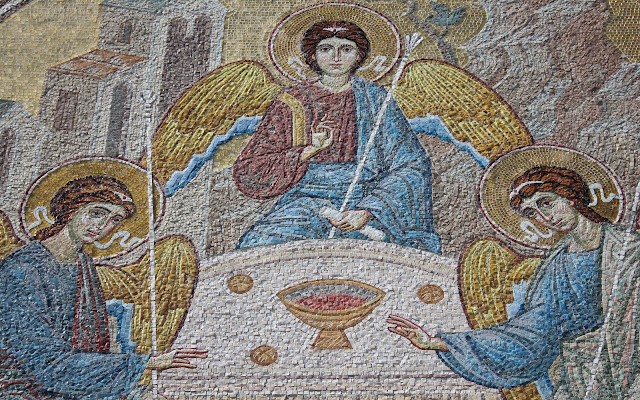




































































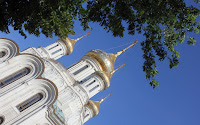



















































































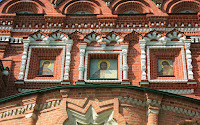

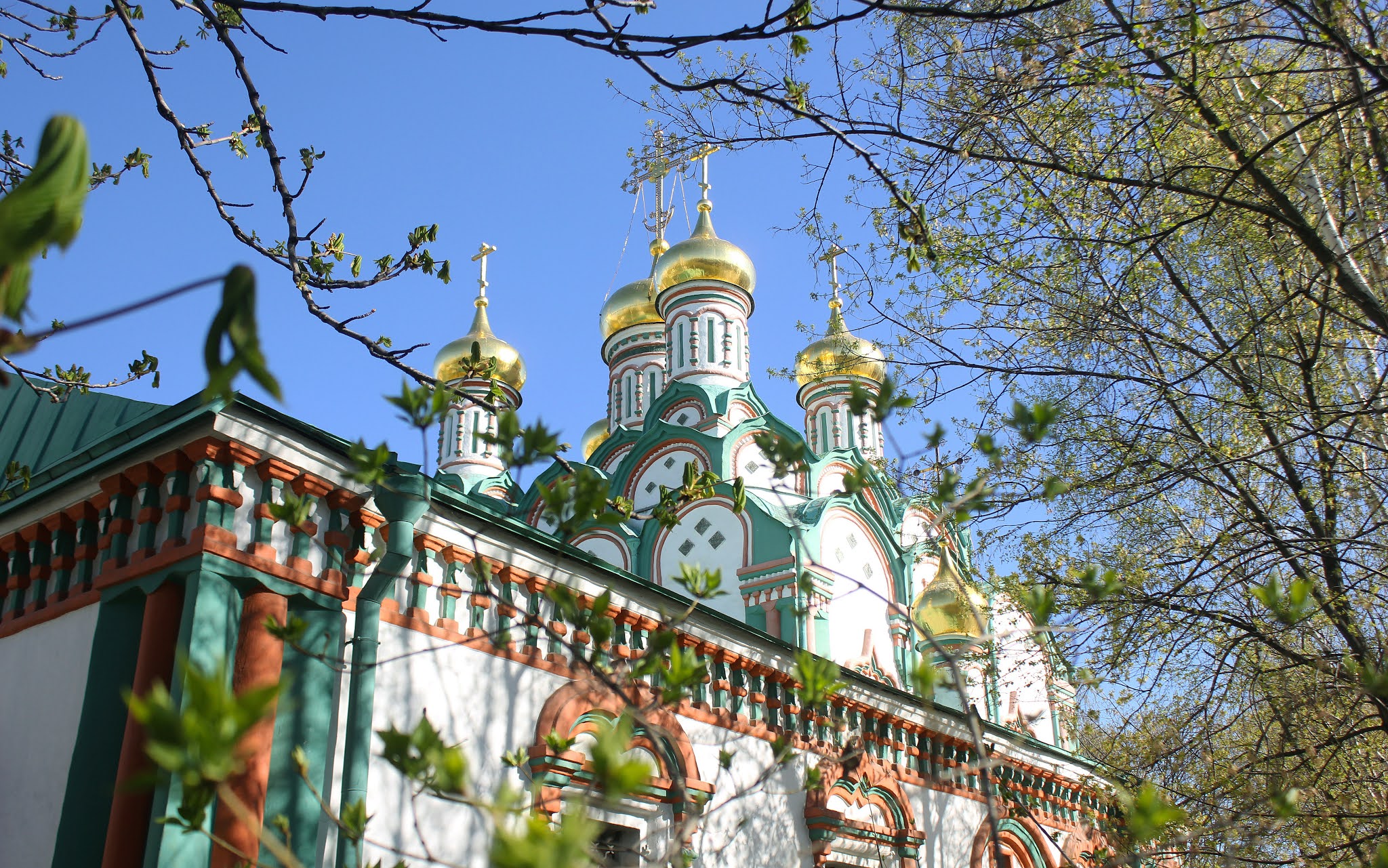










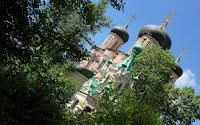





















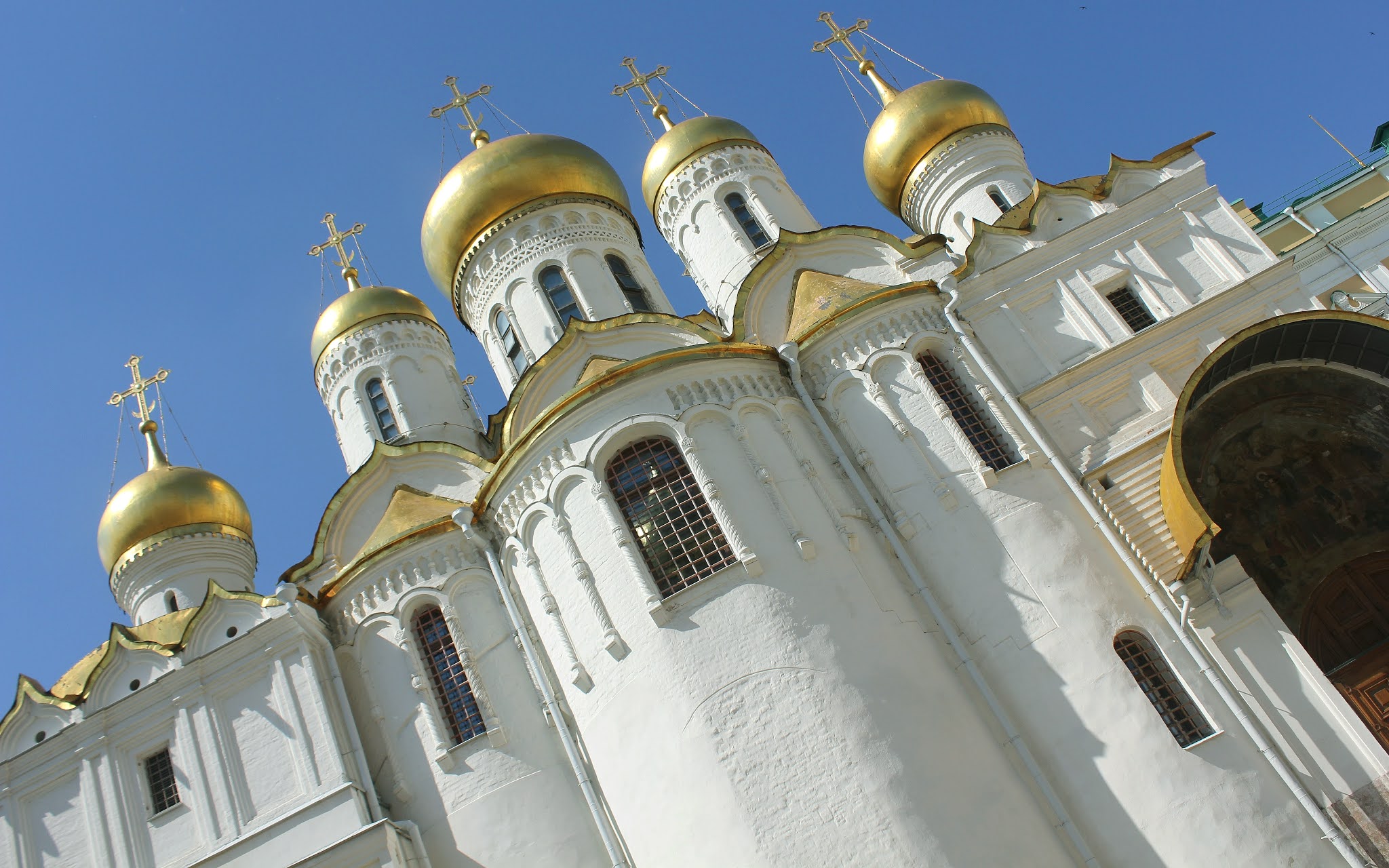



































































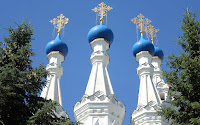














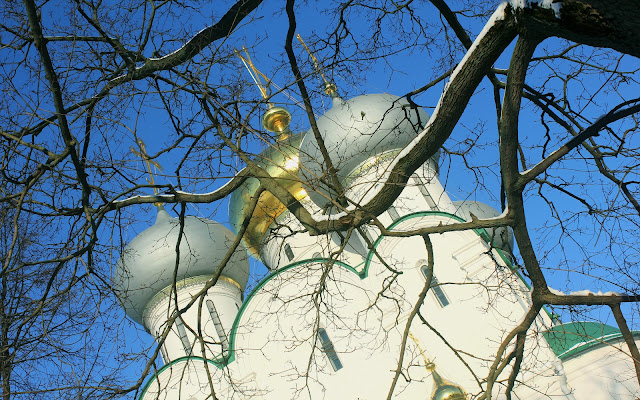

















































































































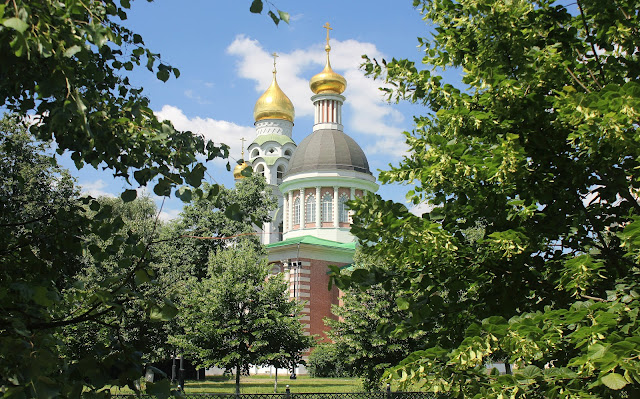






































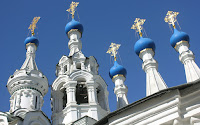





















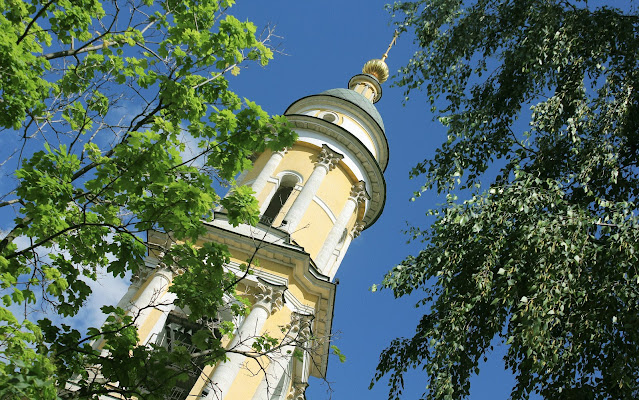




























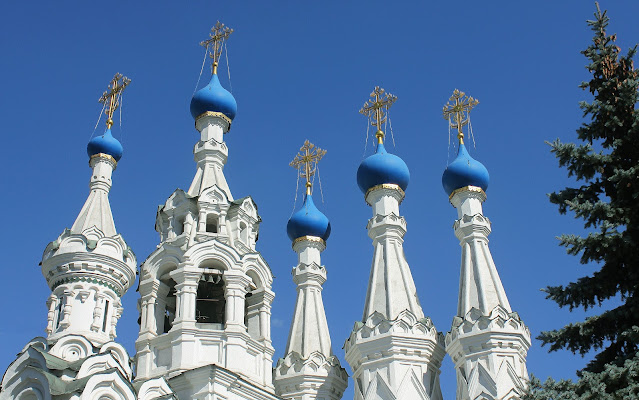










































































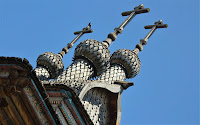










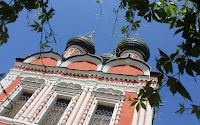














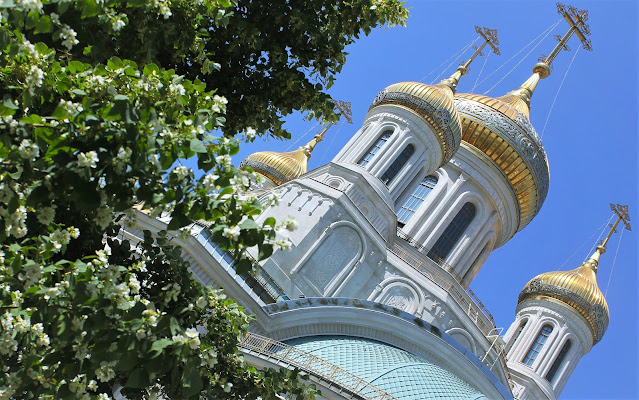







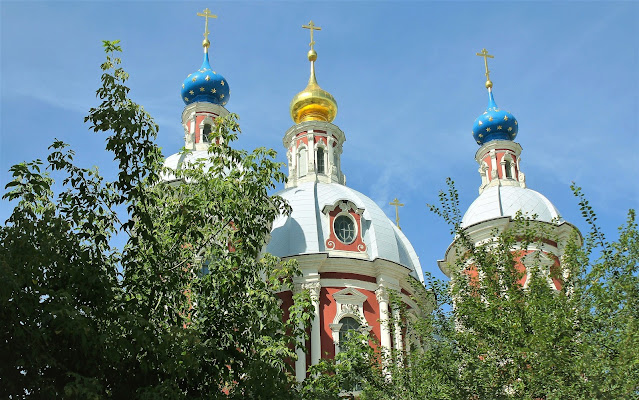






































































































































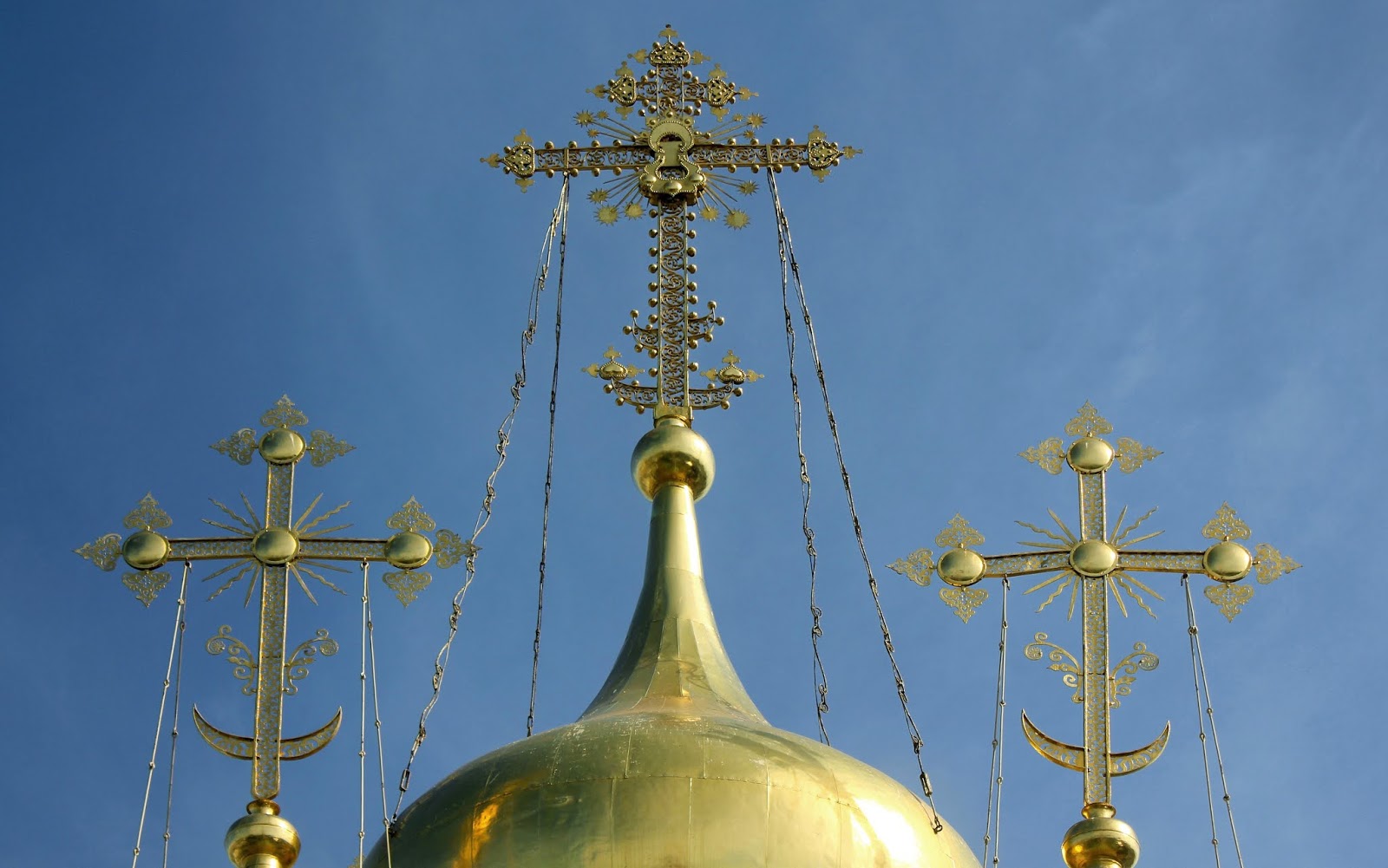





Комментариев нет:
Отправить комментарий